Corpus construction
Collecting all recipes from various back grounds has been a tedious process for me. The online resources are surprisingly limited and unorganized. When I first started building my corpus, I had to find all the recipes that I was interested in and combined them into my customized “cookbook”. As a result, the corpus I collected are not general or representative. They are biased by my personal like. At the same time, the corpus is so small that I didn’t get as much information as I needed. I then started doing more research in order to expand my corpus more.
Fortunately, I found some cookbooks from different background on various websites. All the recipes in the cookbooks are as representative as I expected. In my corpus, there is an Italian Cookbook, a French Cookbook, a Chinese-Japanese Cookbook, an Indian Cookbook and an Egyptian Cookbook. Although all my corpus are not long, there are still many some words or phrases I want to get rid of.
Voyant vs. Antconc : Interface
When I first started using both text analysis tools, I was pretty impressed by the level of analysis they were able to deliver. As for interface, I really like Voyant because it is so colorful and user-friendly. Voyant also looks more developed comparing to Antconc. Voyant’s layout is also clearer and I was able to locate the useful tool that I needed to analyze my corpus. I also like that Voyant is able to understand different languages.
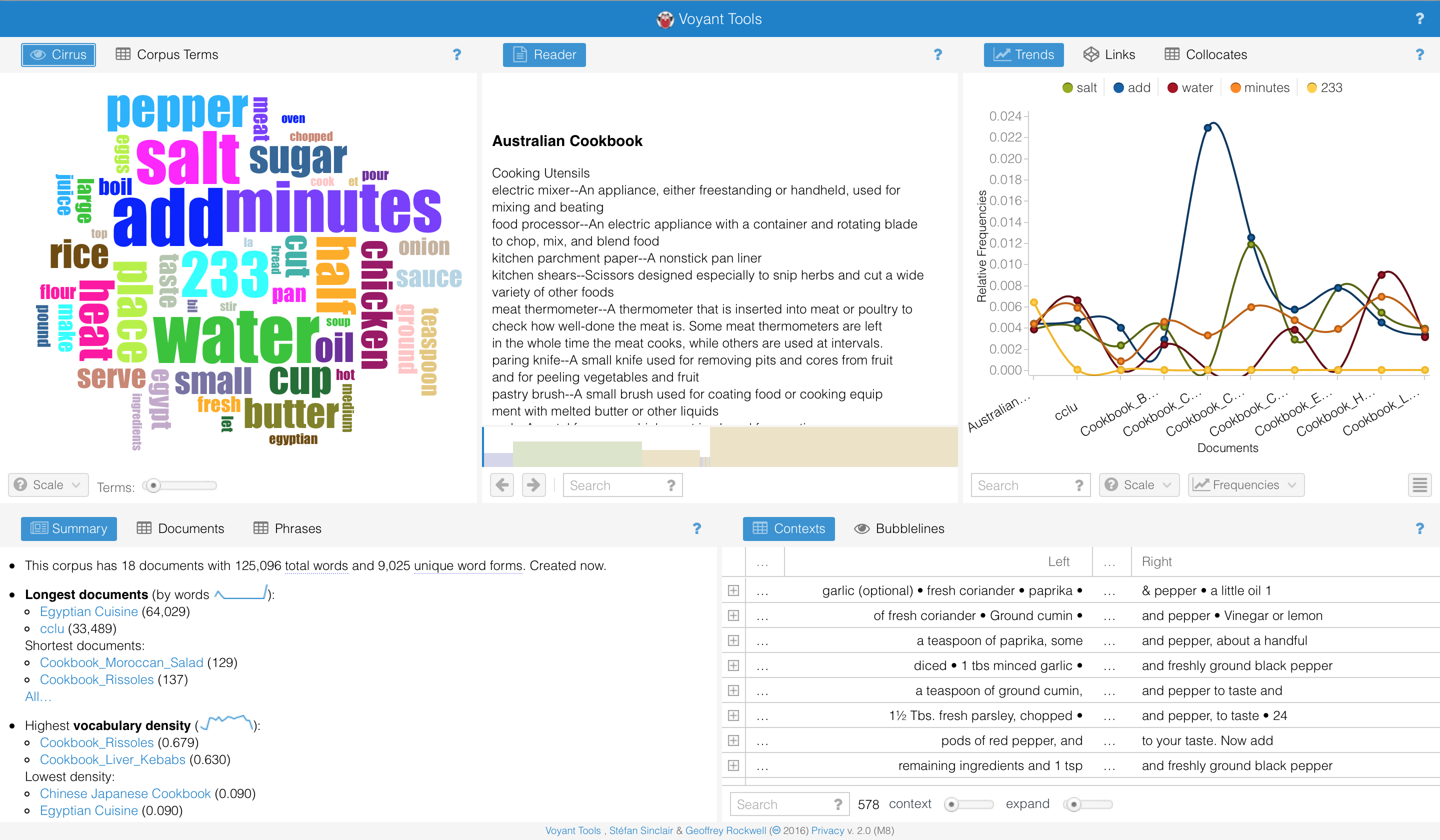
Although Voyant looks fancier than Antconc in some way, Antconc is still more powerful and useful in terms of some analyzing techniques. It is quite obvious to see that many terms in the cirrus provided by Voyant are useless. Voyant was showing the words I was not interested in instead of the terms I was looking for. I had to modify the wordlist a lot so that I can make some reasonable analysis. Modifying the wordlist was a painful process. I had to add some terms first and confirmed the new list. Next, some other useless words would pop out. Then I needed to go back to the wordlist I just modified and add some more words. Finally, I got this cleaner result:
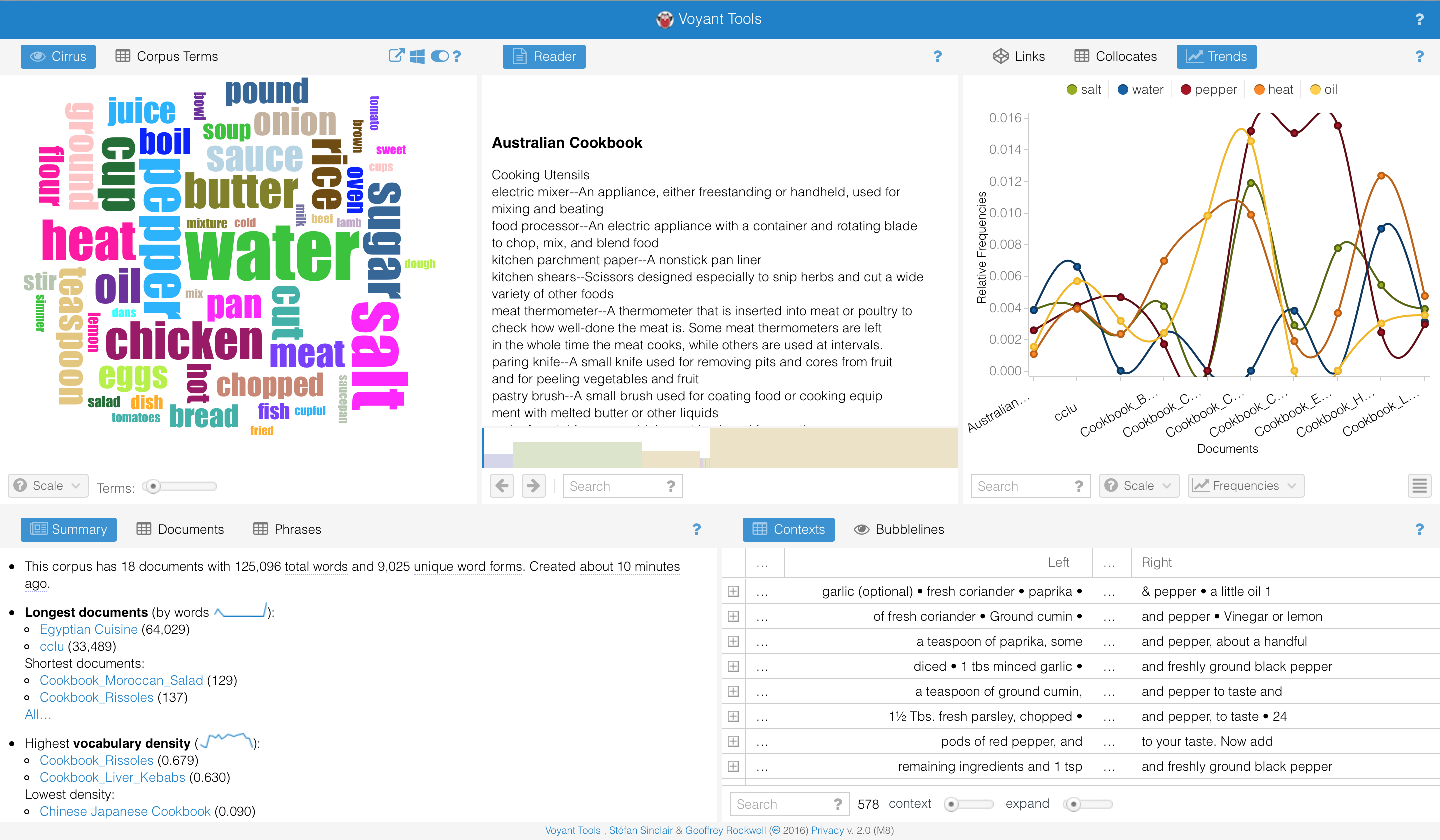
Nevertheless, I have to admit that Voyant has done a good job by constructing a word cloud for you which Antconc fails to deliver. Plus Antconc is always blurry.
Voyant vs. Antconc: Searching
Using Antconc, I felt it has done a good job in terms of delivering a well-organized result of searching words. I was able to look at the surrounding texts of a keyword I was searching for. It also allows me to see which corpora a certain line comes from. Consequently, I was able to perform some differential searches. For example, by searching “pork” I was able to not only find out people from which background cook pork less often than other backgrounds but also obtain how each culture prepares pork.
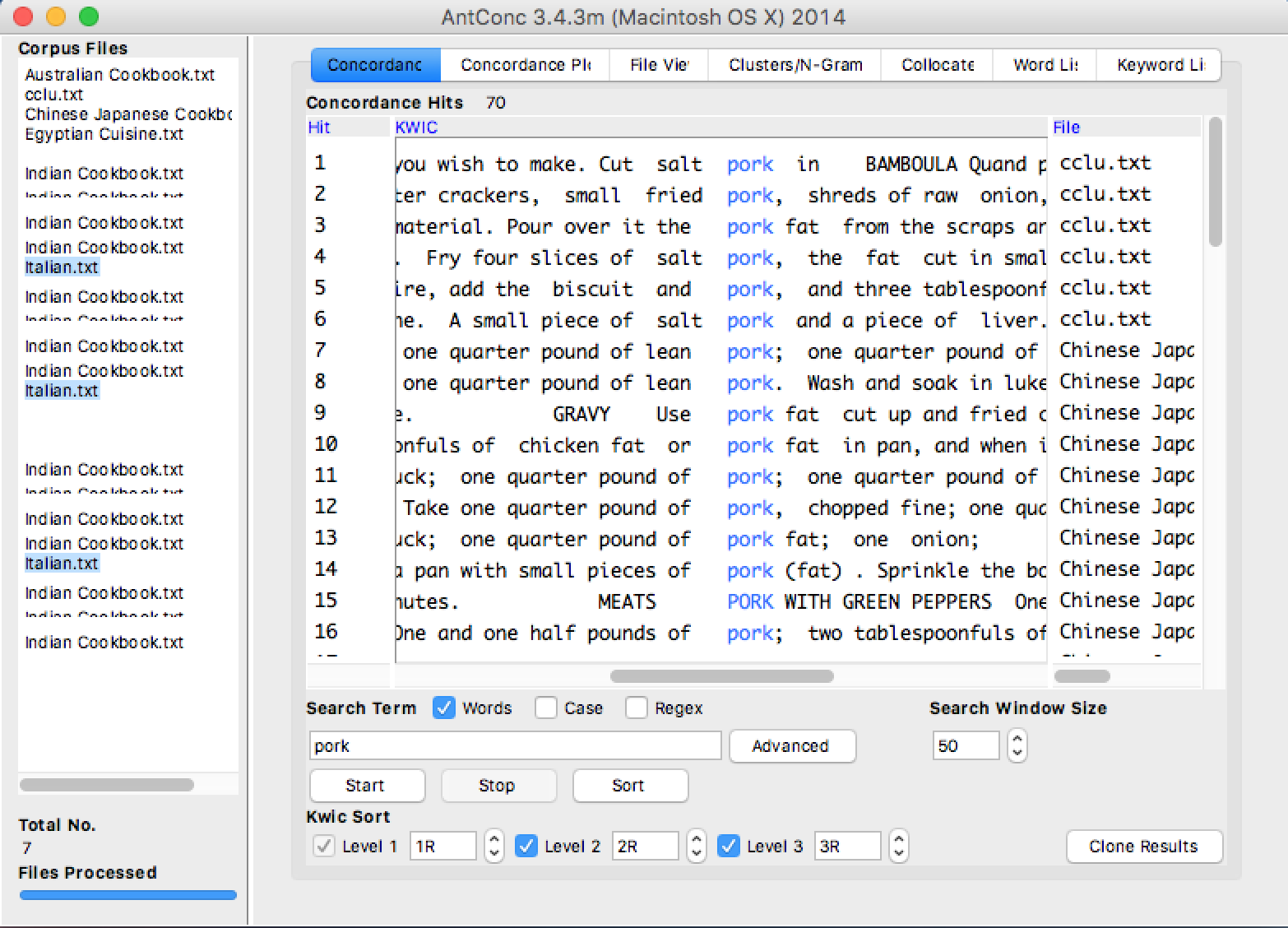
As for Voyant, there is a useful tool called Bubblelines which allows me to see the frequencies of each key term in each corpora by looking at the size of the bubbles.

Yet Bubblelines didn’t tell me the location of each keyword in the text.
Voyant vs. Antconc: Specialties
There are some particular features I found out that Voyant had and Antconc had.
Voyant provides a tool that creates links between key terms. From the links, I was able to tell what terms were associated with certain words in my corpus. The relationships between words are very useful information for me to make analysis.
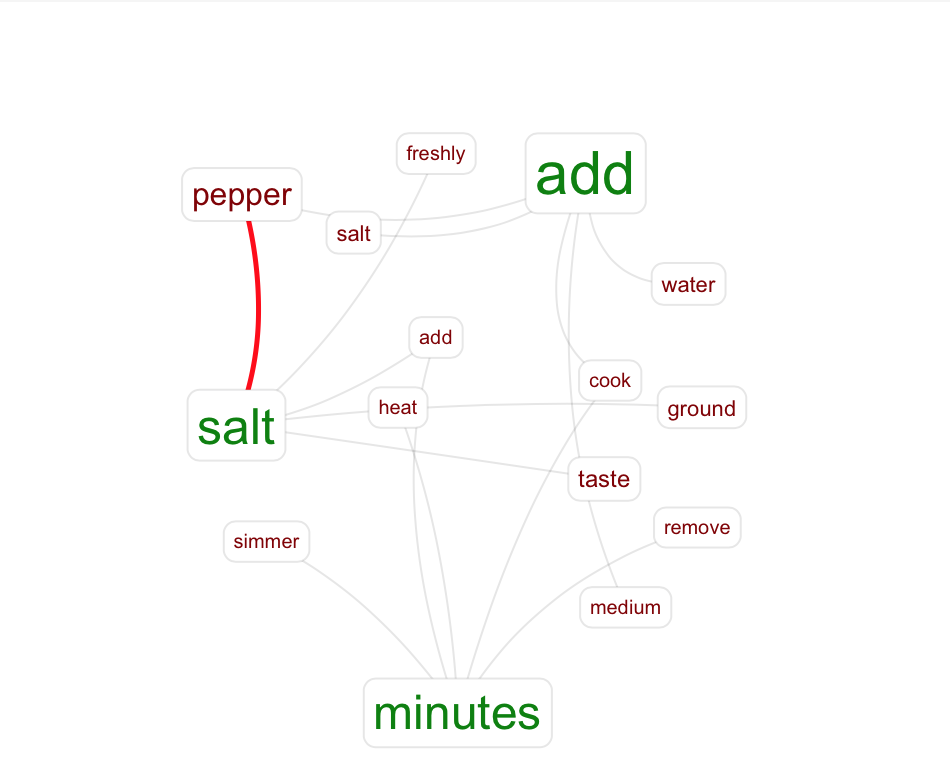
Antconc allows me to compare corpus to find out the distinct between corpus. Antconc lists all the keyness of words in the corpus I want to compare. “Keyness” is a measurement that tells us how frequently a word appears in one corpora over it appears in another corpora. Therefore, I’m able to the divergence of two cultures in terms of cooking.
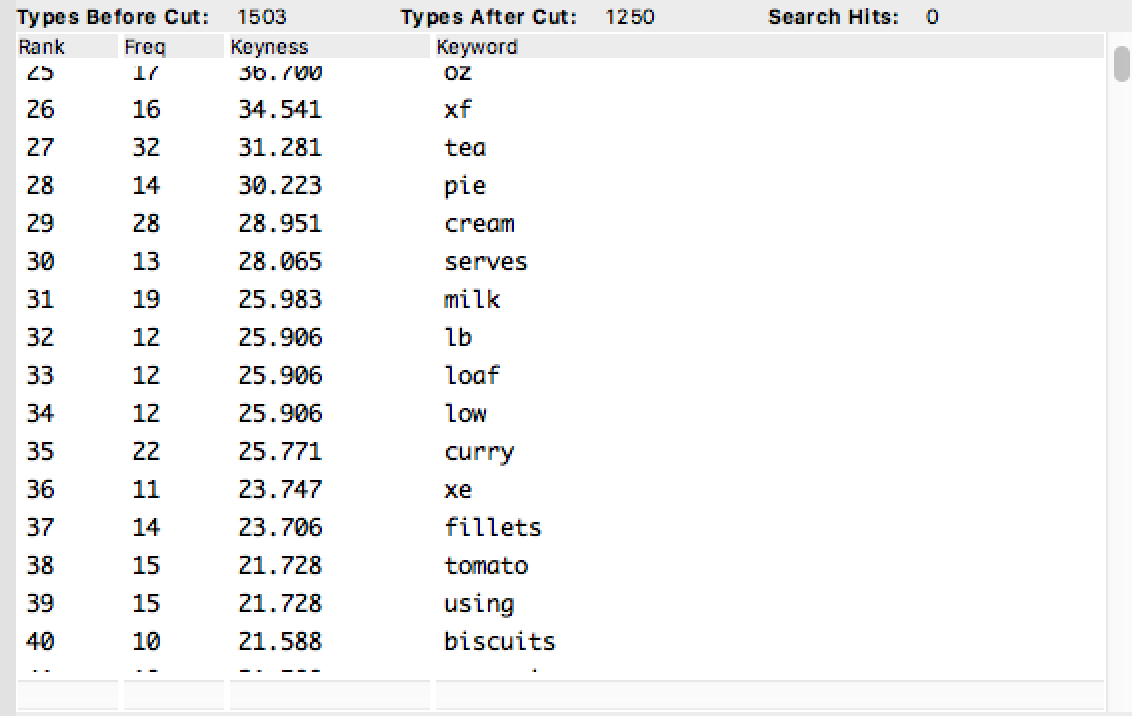
This is the result I got from comparing Australian Cookbook and Chinese-Japanese Cookbook. The result is very interesting.
Reflection
This whole process of corpus construction and analysis have impressed me that how diverse cultures are in terms of cooking. Even people from the same continents cook differently. I am excited to see more contrast and analogies between cultures.